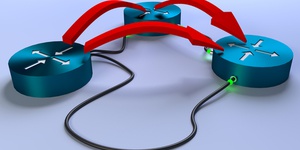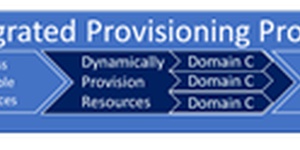
Whitepapers
C-RAN Mobile Architecture Migration: Fujitsu’s Smart xHaul Is an Efficient Solution

To adapt mobile network architectures and address increasing bandwidth demands, service providers are deploying C-RAN architectures to improve performance and reduce costs
Deployment of C-RAN architectures has enabled increased deployment of optical mobile fronthaul solutions to deliver low-latency, high-bandwidth connectivity between remote radio heads and baseband unit electronics. Service providers are recognizing the necessity to reduce their mobile networking costs by better aligning the total electronics capacity of their networks with the total network utilization at any given time. They realize that by separating the electronics into a centralized pool where multiple radios or remote radio heads can share access to it, they can drive down capital costs and eliminate underutilized capacity. Centralized baseband units also enable easier handoffs and dynamic RF decisions based upon input from a combined set of radios. As service providers deploy C-RAN architectures, they face significant challenges and decisions, specifically the selection of their mobile fronthaul solution. The CPRI protocol is extremely latency sensitive, which results in a latency link budget that limits the distance between RRH and base-band units to less than 20 km. The mobile fronthaul transmission equipment must minimize its latency contribution, or this distance will become even shorter. CPRI signaling is also highly inefficient, consuming as much as 16x transmission bandwidth versus the actual data rate seen by mobile applications. To address which solutions best target these requirements, ACG Research analyzed the total cost of ownership and compared the economics of P2P dedicated dark fiber to that of active DWDM solutions like Fujitsu’s Smart xHaul.
We analyzed the operational expense of the Smart xHaul solution over five years and compared it to competing mobile fronthaul alternatives. The analyses focused on the deployment of 150 macro cell sites, each supporting three frequency bands and three sectors. We also considered deployment of five small cells per macro cell site for a total of 750 small cell deployments. The results demonstrate that although the capital expense of deploying a DWDM solution such as Smart xHaul is multiple times greater than the capex of P2P dark fiber, the reduction in fibers due to signal multiplexing and the advanced service assurance capabilities delivers 66% lower opex and 30% TCO savings. When looking at competing DWDM solutions, we also find that the advanced functions of the Smart xHaul solution deliver 60% lower opex associated with detecting, identifying root cause and resolving field issues. In addition, industry-leading features in the Smart xHaul solution provide the ability to distinguish between optical transport and radio service impairments, which are identified by inspecting the actual CPRI packet frames. When combined with the other performance monitoring and service assurance capabilities, CPRI frame inspection results in rapid issue identification, assignment and resolution.
You might like similar whitepapers


Orchestrating Dynamic Enterprise Services

5G Service Assurance: The Case for AIOps

AUTONOMOUS NETWORKS: NOW IS THE TIME

Disruption Propelling Massive Changes in Video Market

The Missing Guide in SP Managed Services Profitability

Segment Routing: An ACG Research Whitepaper

Propelling Operators to L3 Operations Autonomy and Beyond with Huawei ADN

The Economic Benefits of a Super-Converged Multi-Access Edge Network

The Economic Benefits of the Ciena Virtualized Edge Solution

The TCO Benefits of Distributed Broadband Services with CUPS

Delivering Policy Continuity at Scale in Cloud IT and Managed Network Services

Nuage/ALU on the VNS Solution in an SP Context

Next-Generation Cloud Metro Network Requirements and Architectures

Lenovo: Data Center Switch Solutions for Enterprise Data Centers

Broadband Access Transformation

Hybrid Networks: Integrated Provisioning for Virtual and Physical Networks

Huawei Autonomous Driving Network: Standards-Based but Differentiated

Itential Vendor Profile: Automation and Orchestration for Multi-Domain Networks

The Driving Factors behind the Telecommunications Shift to Cloud Metro Networks

Maximizing Efficiency Using Standards-Based, Model-Driven Infrastructures in NFV Deployments

Using Open Virtual RANs in 5G

The TCO Benefits of Dell’s Next-Generation Telco Servers

The Economic Benefits of Distributed Broadband Services

Mitigating Market Challenges in Telecommunications

MODERNIZING THE CABLE SERVICE DELIVERY INFRASTRUCTURE

INTRODUCING xHAUL REWRITING THE PLAYBOOK FOR TRANSPORT NETWORKING IN THE RAN IN 5G

Comparing Broadband Network Architectures in the Evolving Connectivity Landscape

The Evolution of Broadband Traffic: A Forecast for the Americas, EMEA, and APAC Regions

Middle-Mile Networks Capacity Requirements for Fixed Broadband

THE BUSINESS CASE FOR ADAPTIVE IP

Virtualization Journey: Cable Companies Are on Their Way

The Economic Benefits of Juniper Apstra and CN2 in a Modern 5G Network

THE POWER OF DIFFERENTIATION: BUILDING BROADBAND FOR 2021 AND BEYOND

Simplifying IP Networks

Understanding VRAN

Achieving End-to-End Intelligence in the Cable Access Network

AUTONOMOUS NETWORKS POWER INDUSTRY 4.0

5G Service Assurance: The Case for AIOps

The Economic Benefits of Virtual Edge Services

Coriant’s Multi-Sided Platform Partner Program: Market Impact Report

Key CommSoft Learnings from #MWC19

A TCO Comparison of Private WANs vs Managed Network Services for Enterprises

Always On, Active Analytics and AI for Superior Performance in Digitally Powered Enterprises

An Approach to Offering Profitable Managed Network Services

Meet Market Needs with Software-Enabled Solutions

AUTOMATING 5G ACCESS DEPLOYMENTS

Huawei ADN Solution Approach to Implementing Autonomous Networks


